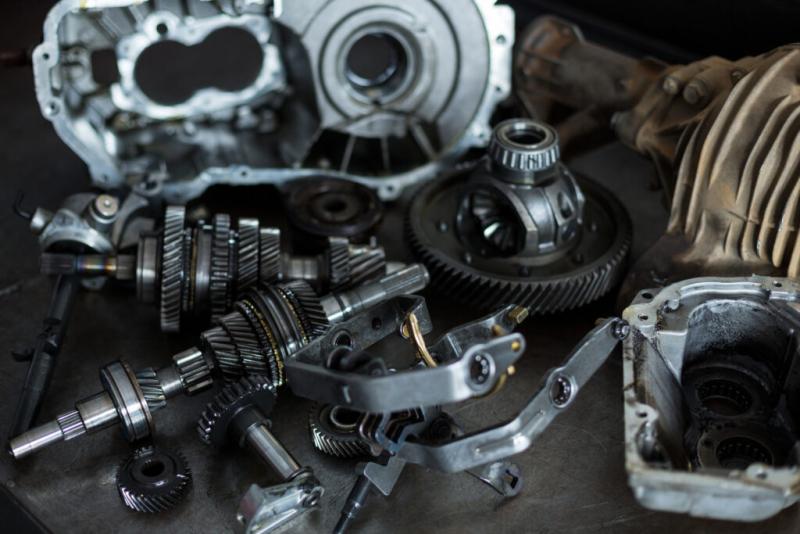Automotive Electronic Components

For more than two decades, Laird, a DuPont business, has capitalized on its materials science expertise to help Tier 1 automotive suppliers resolve complex electronics design challenges where the structure of the module causes EMI suppression and heat channeling issues. We are designers helping designers avoid wasted effort – and costs – and speeding the time-to-market for key automotive components.
Review our portfolio of automotive component protection solutions. Then contact us today.
Superior Protection From a Global Innovator in Material Science
EV Powertrain Electronics
Our team of engineers applies extensive industry knowledge about sub-assembly design to help safeguard automotive powertrain electronics from heat and EMI issues while resolving complex structural issues.
Examples include PFC chokes and transformers, which by their nature are not perfectly efficient and generate heat. Each must be housed individually – and thermally potted.
We get behind the wheel to help with thermal management solutions issues facing electric vehicles and offer two key differentiators. First, we are vertically integrated down to the magnetic ceramic powder. Second, as a significant thermal compounds supplier we are again vertically integrated down to the resins and fillers.
These differentiators help give us the green light to assume responsibility for automotive powertrain electronics performance and quality assurance across a much larger swath of the supply chain than our competitors.
LED Component Systems
Our team of engineers applies extensive industry knowledge about sub-assembly design to help suppress EMI crosstalk from LED automotive component systems. And to improve thermal management for electric vehicles, for example.
Modern lighting systems are comprised of a power supply, a digital control board, and a light source – all ideally physically separated from each other. The pressure to reduce size frequently results in placing the analog, digital, and optical functions close together and not electrically isolated. This can create electrical crosstalk and can expose the optics to processing chemicals needed for the analog and digital circuits.
Laird has a complete line of non-silicone and low outgassing silicone-based pads, greases and dispensable products. Most importantly, we have the experience to advise you about deploying a variety of strategies. Our multi-functional solutions help cool components and suppress EMI simultaneously – using a single space-saving product.
EV Powertrain ElectronicsADAS / Autonomous Driving Systems
Our team of engineers applies extensive industry knowledge about sub-assembly design to help safeguard ADAS electronic components from EMI and excessive heat while resolving complex structural issues.
Progressive ADAS sensor designs consume more power and emit more heat. To remain competitive, manufacturers must ensure optimum sensor efficiency or face the risk of throttled power, in turn sacrificing sensitivity, range and performance.
electromagnetic interference solutions is a barrier to function and compliance. Increasing transistor switching speeds cause various device fundamentals and harmonics to interact with each other, and the outside world, in unanticipated ways.
EV/PHEV Battery Packs
Our team of engineers applies extensive industry knowledge about sub-assembly design to help safeguard EV/PHEV battery packs from the consequences of excessive heat.
With increased charging speeds, battery packs emit ever increasing amounts of heat. Are packs actively or passively cooled? Must the thermal material act as a dielectric barrier? Is the pack silicone- or non-silicone mandated? Are the thermal materials themselves relied upon for mechanical support or for high compliance?
Ultimately, the appropriate choice of thermal interface materials satisfies the design constraints while simultaneously satisfying the economics. It comes after extensive evaluation of the total cost of ownership and true cost of implementation in a serial production setting. Huge material volumes are required. The importance of fast placement of preferred materials cannot be overstated.
Infotainment/Cluster Systems
Our team of engineers applies extensive industry knowledge of mechanical, thermal and electronic design to help safeguard infotainment/cluster systems from heat and EMI issues while resolving complex structural issues.
Infotainment electronics are employing greater functionality and higher speeds, causing more pronounced EMI and thermal challenges. A passive cooling strategy is imperative to eliminate the fan without relinquishing any gains in the power budget.
Following 20+ years of experience in infotainment electronics, Laird has a first-hand perspective on strategies that have succeeded and failed. We consult with our customers comprehensively on ridding systems of unwanted EMI and growing thermal loads, and on helping design teams succeed as they go-to-market.
Post Your Ad Here
Comments